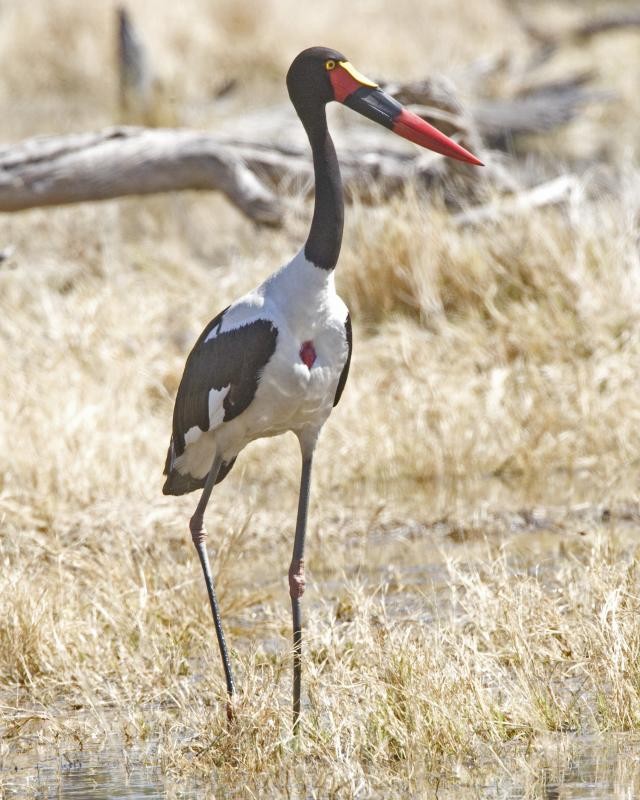Saddle-billed Stork
A species of Black-necked and Saddle-billed Storks, Also known as Saddlebill Stork Scientific name : Ephippiorhynchus senegalensis Genus : Black-necked and Saddle-billed Storks
Saddle-billed Stork, A species of Black-necked and Saddle-billed Storks
Also known as:
Saddlebill Stork
Botanical name: Ephippiorhynchus senegalensis
Genus: Black-necked and Saddle-billed Storks
Content
Description People often ask General Info
 Photo By Lip Kee , used under CC-BY-SA-2.0 /Cropped and compressed from original
Photo By Lip Kee , used under CC-BY-SA-2.0 /Cropped and compressed from original Description
This is a huge bird that regularly attains a height of 145 to 150 cm (4 ft 9 in to 4 ft 11 in), a length of 142 cm (4 ft 8 in) and a 2.4 to 2.7 m (7 ft 10 in to 8 ft 10 in) wingspan. While heights published have been in the aforementioned narrow range, reportedly adult saddle-billed storks in captivity can attain a height of up to 150 to 180 cm (4 ft 11 in to 5 ft 11 in). The male of the species is larger and heavier than the female, with a range of 5.1–7.52 kg (11.2–16.6 lb), with a mean mass of 6.38 kg (14.1 lb). The female is usually between 5 and 6.84 kg (11.0 and 15.1 lb), with a mean mass of 5.95 kg (13.1 lb). Among the large storks, the saddle-billed broadly overlap in size with the two larger Leptoptilos and the Jabiru stork but possesses a longer, more slender neck and slightly longer legs than the other largest storks, so the saddle-billed is likely to be the tallest extant species of the family. Its extremely long legs measure up to 36.5 cm (14.4 in)) in tarsus length. The long bill measures from 27.3 to 36 cm (10.7 to 14.2 in). The sexes can be readily distinguished by the golden yellow irises of the female and the brown irises and dangling yellow wattles of the male. It is therefore one of the only storks to display sexual dimorphism in colour. It is spectacularly plumaged; both the female and male appear identical when perched but the female shows much more white in the primaries in flight. The head, neck, back, wings, and tail are iridescent black, with the rest of the body and the primary flight feathers being white. Juveniles are browner grey in plumage. The massive bill is red with a black band and a yellow frontal shield (the "saddle"). The legs and feet are black with pink hocks. On the chest is a bare red patch of skin, whose colour darkens during breeding season. 
Size
1.5 m
Colors
Black
White
Life Expectancy
36 years
Nest Placement
Tree
Feeding Habits
Saddle-billed Stork's primary diet includes fish, frogs, and crabs, supplemented by small birds and reptiles. Saddle-billed Stork hunts with a measured, graceful approach, resembling larger herons.
Habitat
Saddle-billed Stork predominantly inhabit freshwater and saltwater wetlands characterized by environments such as rivers, lakes, floodplains, marshes, and estuaries. They favor regions with 400–900 mm annual rainfall that sustains aquatic prey without compromising prey density. Optimal habitats are wet savannas and flooded zones with grassland-woody vegetation mixes, where the presence of trees provides essential nesting sites.
Dite type
Piscivorous
People often ask
General Info
Feeding Habits
Bird food type
Behavior
They are silent except for bill-clattering at the nest. Like most storks, these fly with the neck outstretched, not retracted like a heron; in flight, the large heavy bill is kept drooping somewhat below belly height, giving these birds a very unusual appearance to those who see them for the first time. To experienced birdwatchers on the other hand, this makes them easily recognizable even if seen from a distance. It has been suggested that due to the large size and unusual appearance in flight, this species is the basis for the "big bird" and kongamato cryptids. 
Species Status
Not globally threatened.